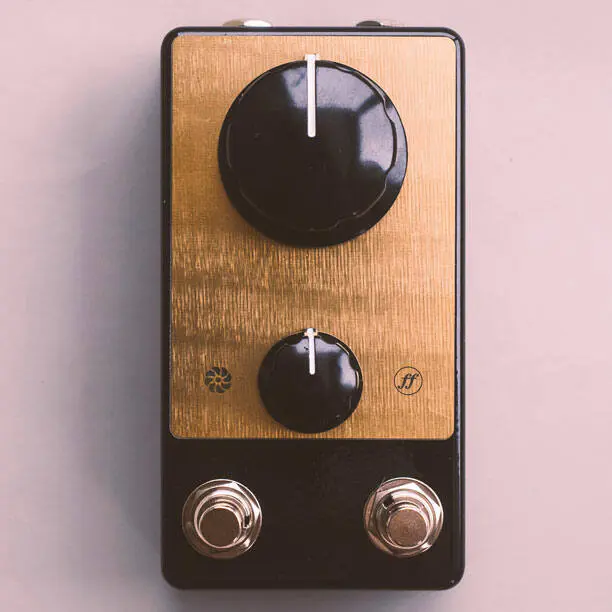
The Fjord Fuzz Hedda is a two-knob Fuzz Face-inspired circuit designed to sound as dynamic as possible – which is not exactly a common thing for fuzz pedals, since they tend to sound extremely compressed.
Company owner and engineer Daniel Thornhill, who’s been focused for ten years to this date perfecting his design of vintage-sounding fuzz circuits, adopted a completely different approach for the Hedda, using a very low input impedance and very high gain BC848 silicon transistors as well as built-in asymmetrical clipping.
With its two knobs (Volume on top and Bias at the bottom) this fuzz can deliver a variety of sounds from ’70s flavored sustained leads to spitty and velcroy tones.
The Hedda also features a second momentary footswitch that turns on a feedback loop glitch, feeding the output to the circuit’s input, creating theremin-like oscillation.
Daniel shares this advice in the builder’s notes about how to use this fuzz:
Low input impedance means don’t stick it after a buffer or an unbuffered wah and please don’t expect the output or gain you’ll find in ODIN or BERSERK. You can do whatever you want, but if you were to use this like I do, with a low output, single coil guitar, into a roaring, distorted Marshall style amp and use your guitar’s volume knob to get your clean tone.
Here’s the first demo video of the Hedda.
Fjord Fuzz Hedda, Builder’s Notes
highly interactive, unapologetically vintage fuzz with high dynamic range and chaos oscillation switch – for people who like fuzz
I’ve spent the last 10 years trying to squeeze as much vintage tone and texture as possible into modern, user-friendly and predictable packages. HEDDA ditches that approach in favour of maximum dynamism and authority.
What’s left is a very simple device, packed with flavour and colour. It features amazing clarity on cleanup alongside thick and sticky low end compression at full tilt. As a guitarist I personally prefer maximum dynamic range from my rig and HEDDA is designed specifically for this purpose.
The way this is done is by using a very low input impedance and very high gain silicon transistors as well as built-in asymmetrical clipping.
I chose the BC848 transistor, the 12th generation of the BC108 family, not because it’s better than its contemporaries, but because you and me both know you secretly want the BC108s great (*12) grandchild of the most legendary silicon transistor ever in you new fuzz pedal, so why not?Low input impedance means don’t stick it after a buffer or an unbuffered wah and please don’t expect the output or gain you’ll find in ODIN or BERSERK. You can do whatever you want, but if you were to use this like I do, with a low output, single coil guitar, into a roaring, distorted Marshall style amp and use your guitar’s volume knob to get your clean tone, I think you’ll find there’s nothing else quite as magnificent as HEDDA. It’s an extension of your guitar – an extension of you as an artist.
The secondary foot switch momentarily engages the feedback loop glitch switch.
As long as you hold it down, the circuit output is fed back to the circuit input for synthy, theremin-like oscillation, also controllable via your guitar’s onboard controls. The big knob controls your volume and the small control sets your bias, from 70s overbiased, sustainy leads at fully counter clockwise to spitty and gated fuzz at max.






















